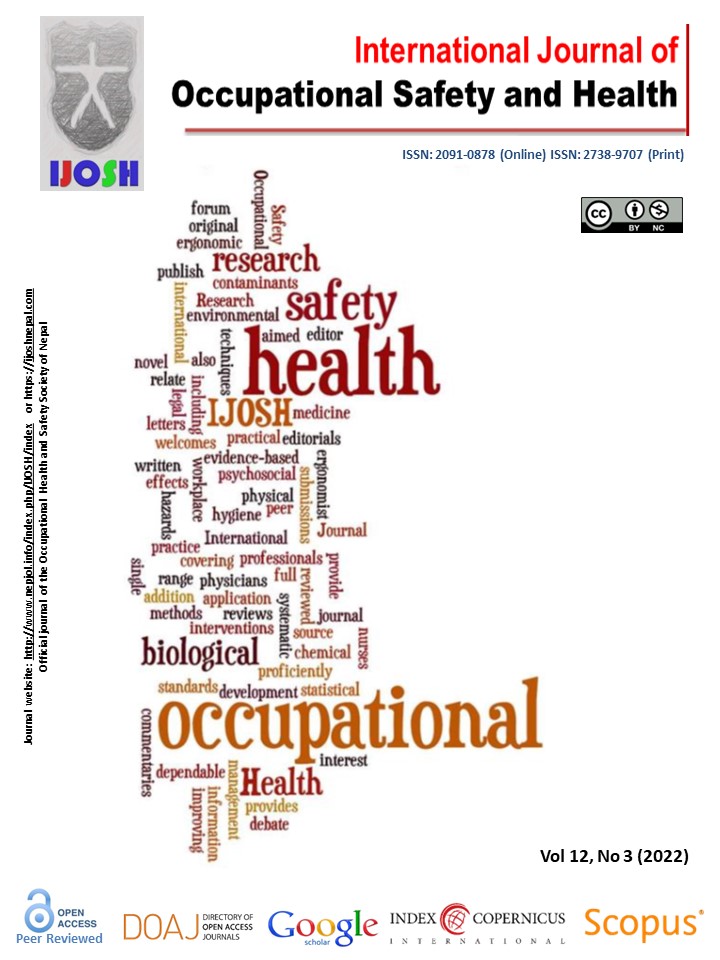Ergonomics Evaluation of Manual Lifting Task on Biomechanical Stress in Symmetric Posture
DOI:
https://doi.org/10.3126/ijosh.v12i3.40903Keywords:
Manual Material Handling, Construction Worker, Loading Rate, Workload Assessment.Abstract
Introduction: Manual lifting operations continue to play a key role in the industrial and service sectors, inflicting physical strain on the musculoskeletal system, despite advances in automation. As a result, an experiment is carried out to assess the impact of two lifting task parameters; weight and height, based on the estimation of subjective responses and biomechanical loading, while lifting the weight symmetrically in the sagittal plane. Also to recommend the safe limit for manual lifting tasks.
Methods: Twelve volunteer male students in the age group of 21 to 26 years performed lifting tasks from floor to 5 different heights (below the knee to ear level), with 5 different weights (10 to 20 kg) using free-style lifting techniques. The load pan with no handle was used for lifting weight, which is typically adopted in the Indian building construction field. The subjective estimate was obtained using workload assessment by body discomfort chart. The biomechanical loading (loading rate) for each lifted weight and height was collected using a force platform.
Results: The results showed that heavier weights produced higher stresses than lower weights. The loading rate was found to be almost similar at waist or knee level. The loading rate was observed to be linearly increasing after waist level. The overall workload rating seems to be a good correlate with the mean loading rate to some extent.
Conclusion: It is proposed to keep the maximum acceptable lifting weight from floor to knee, up to the ear level is 15 kg, to prevent any musculoskeletal or chronic injury.
Downloads
Downloads
Published
How to Cite
Issue
Section
License
Copyright (c) 2022 Anurag Vijaywargiya, Mahesh K Bhiwapurkar, A. Thirugnanam

This work is licensed under a Creative Commons Attribution-NonCommercial 4.0 International License.
This license enables reusers to distribute, remix, adapt, and build upon the material in any medium or format for noncommercial purposes only, and only so long as attribution is given to the creator.





